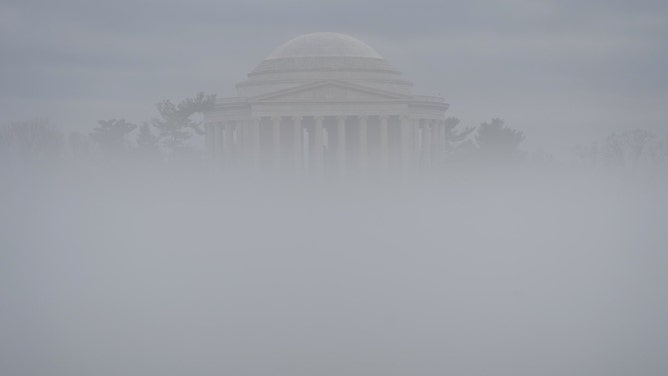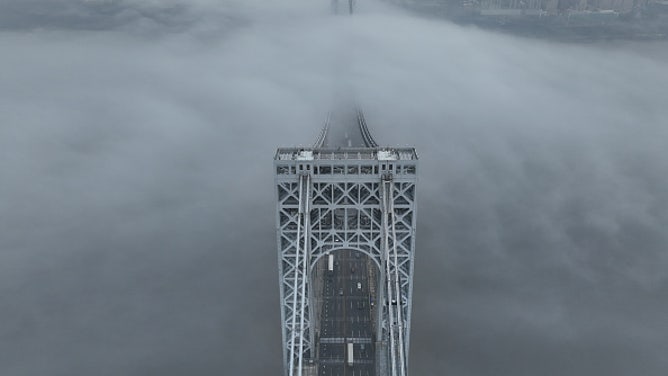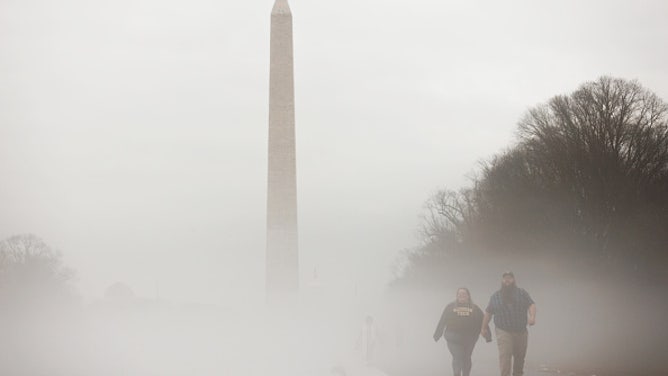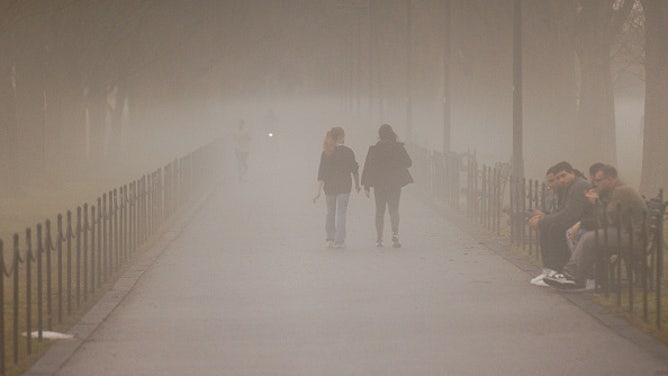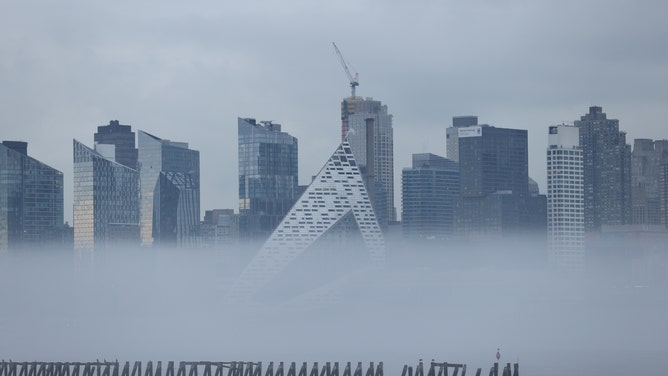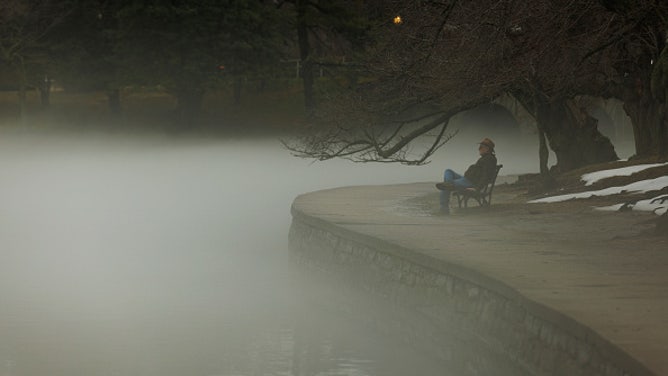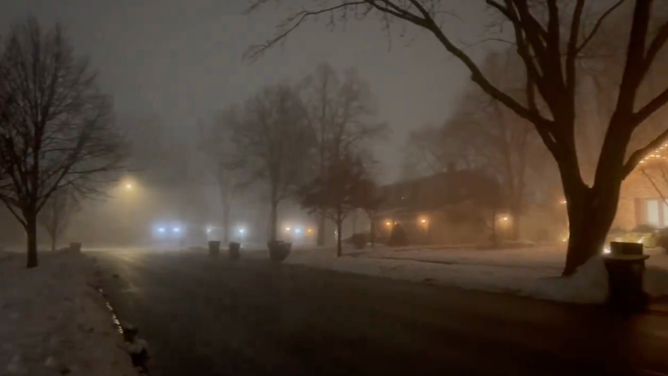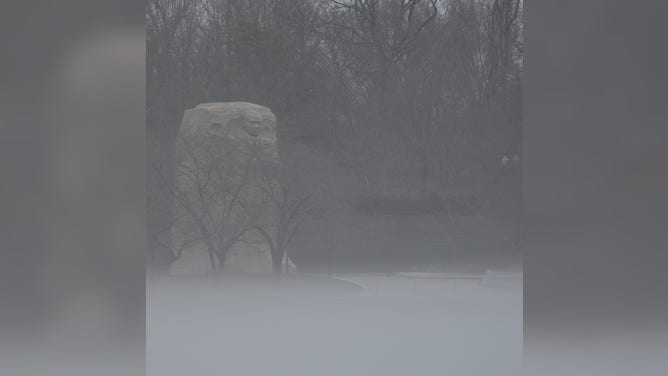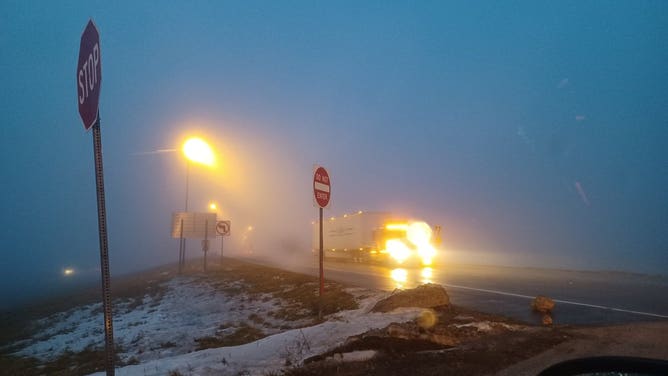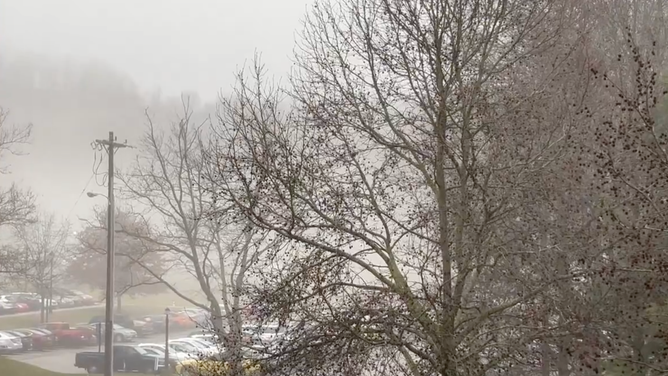Dense fog again blankets over 70 million in US after record-breaking fog coverage Thursday
While alerts again stretched from the Canadian border to the Gulf Coast, it's not quite as expansive as the fog alerts were on Thursday, which set a record for national coverage.
Millions under Dense Fog Advisory on Friday morning
Thick fog once again covered much of the nation's Heartland and parts of the mid-Atlantic Friday morning, leaving over 70 million under fog alerts – many for at least the third straight day.
ST. LOUIS - Thick fog once again covered much of the nation's Heartland and parts of the mid-Atlantic Friday morning, leaving over 70 million under fog alerts – many for at least the third straight day.
While alerts again stretched from the Canadian border to the Gulf Coast, it's not quite as expansive as the fog alerts were on Thursday, which set a record for national coverage.
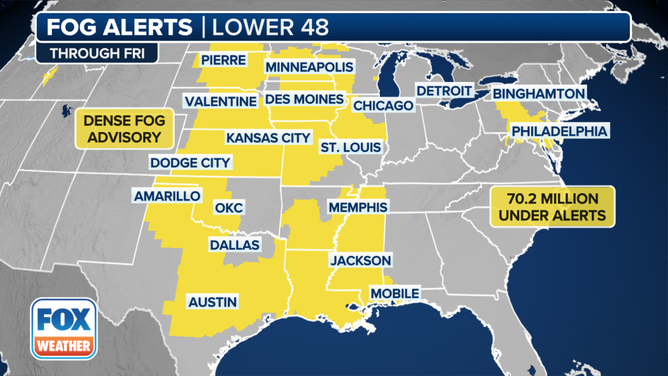
Dense Fog Alerts in place on Friday at 6:30 a.m. ET on Jan. 26, 2024.
Many areas also saw better visibility on Friday morning than Thursday when visibility was as low as 300 feet in some areas.

Current visibility at 6 a.m. ET on Jan. 26, 2024.
(FOX Weather)
Nearly 100 million people awoke to dense fog on Thursday morning – almost a third of the U.S. population - thanks to a weather pattern that swept warmer temperatures across the nation's midsection in the wake of last week's deadly arctic blast.
Fog alerts Thursday spanned over 1,500 miles across 20 states from Missouri to New York and from North Dakota to as far south as Texas. Some Freezing Fog Advisories were in place for parts of the Texas and Oklahoma panhandle and northeast New Mexico.
"One sign of all this warm air flooding northward, especially if you live east of the Rockies, you've seen it: the fog," said FOX Weather Meteorologist Amy Freeze. "Central and eastern U.S. cities right now socked in with heavy fog as the warm air is overriding the cool air right to the surface."
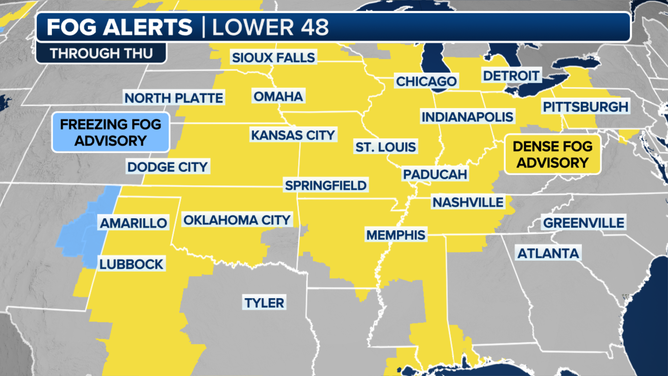
A map showing 100 million people who were under Dense Fog Advisories across 20 states Thursday morning.
Thursday set a record for the third-consecutive day for most National Weather Service office "zone" regions under Dense Fog alerts at 1,517, according to Daryl Herzmann, with Iowa State University’s IEM.
Wednesday held the previous record at 1,341. Before the current stretch, the record had been 926 set just over a year ago.

Dense Fog Advisories remained in place Friday through midday.
Sun reported missing in St. Louis
With fog and low clouds entrenched in the Midwest, the National Weather Service Office in St. Louis reported the city has gone nearly 90 hours without seeing the sun – last seen on Sunday. The NWS St. Louis joked the sun is considered "missing."
Visibility has been 2 miles or less in St. Louis for all but 7 hours between Tuesday evening and Thursday morning. The fog returned Thursday night but wasn't quite as dense.
Chicago was another town that had been stuck in the fog – just behind St. Louis with the amount of time socked in. By Thursday morning, Chicago had gone 25 hours out of 38 with visibility down to 2 miles or less.
St. Louis goes nearly 90 hours without sunlight
Fog alerts are up across 20 states and impacting more than 100 million Americans. Dense fog has blanketed a large area from the Central U.S. to the Northeast causing travel delays at airports and reducing visibility on roads.
At one point Thursday, the FAA issued a ground stop at Chicago O'Hare International Airport due to just 1/8 mile visibility in fog. Visibility was down to just 300 feet in Cleveland, and 0.13 miles in St. Louis on Thursday morning, according to the FOX Forecast Center.

A map showing visibility across the Central U.S. on Thursday morning.
(FOX Weather)
THESE 6 AIR POLLUTANTS CAN CAUSE PROBLEMS FOR YOUR HEALTH
Visibility improved as rain moved through the area later on Thursday. But unfortunately, the sun won’t be shining for some time in St. Louis. With continued clouds and mild temperatures, forecasters with the NWS in St. Louis said the sun won’t likely make an appearance until next week.
Why the fog?
Contributing to the fog is the warmup happening for 270 million Americans this week. This mild weather pattern is interacting with frigid ground leftover from last week’s deadly arctic outbreak.
After nearly two weeks of subfreezing temperatures, it has taken the ground a while to warm back up.
Meanwhile, with a very moist air mass in place on top of that cold ground, dense fog is forming.
"That fog is acting as a blanket," said FOX Weather Meteorologist Stephen Morgan. "Any sort of heating that we get throughout the day - not so much from the sun, but just from the mixing of the atmosphere. Because that warmth is spread through the mid-levels, and then it mixes down at the surface."
Across the U.S., above-average temperatures have spread from west to east throughout the week with the warmest temperatures forecast for Friday for cities like New York. Philadelphia and Washington could even reach into the 50s on Friday, just nine days after highs in the teens. Memphis went from a high of 2 degrees on Jan. 17 to a high of 62 on Wednesday.
WHAT IS SUPER FOG AND WHAT CAUSES IT?

(FOX Weather)


